by Hans Carlsson // Feb. 28, 2023
In the title work of Julia Stoschek Foundation’s new exhibition in Berlin, ‘Without Your Interpretation,’ Ulysses Jenkins is seated, surrounded by a group of musicians at the Art Dock in Los Angeles in 1983. With a tender voice, he is performing a fragmented lyric about social injustice, historical violence and opposition (“You know they play that game, that game of race, let’s hurry up, for our ancestors’ sake”). The video also shows people—some of them Jenkin’s longterm collaborators Senga Nengudi, Maren Hessinger, May Sun and Todd Gray—dancing, occasionally with flashlights attached to their bodies. The dancers execute a form of performative critique, or, as it is formulated in the generous catalogue printed for the exhibition: with their dance they linger in between the “animalistic and robotic as a way to embody the evolution of humans and the industrial impact of Western societies.”
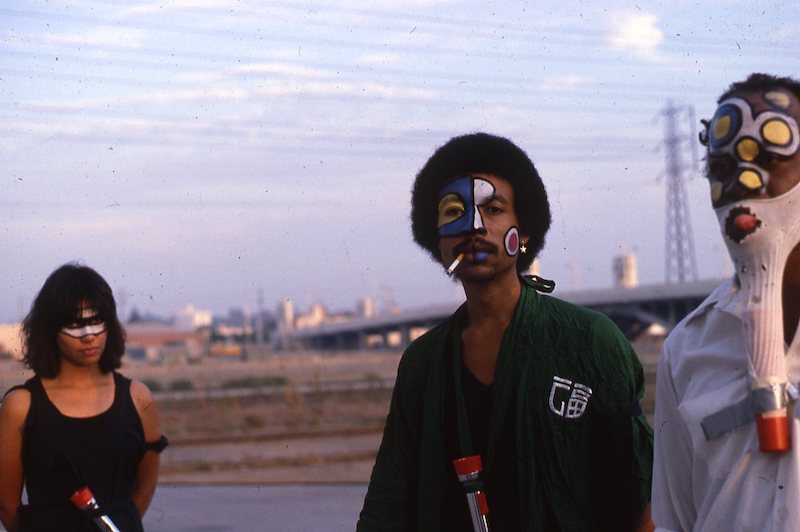
Ulysses Jenkins: ‘Without Your Interpretation,’ rehearsal documentation, 1984, photograph; color print, 8.9 × 12.7 cm // Courtesy of the artist
This work by Jenkins, as many others, contains layers of media: the song by Jenkins, interpreted or related to dancing, choreography and costume design. And, on top of this, the video made to record the event is in itself an elaborated formal experiment: ‘Without Your Interpretation’ crosscuts scenes from the performance with found footage of an astronaut floating in space, an operation scene, a news anchor on TV and much more.
Jenkins was born in 1946 in Los Angeles and, after studying art at Baton Rouge College in Louisiana, he returned to LA. His practice, I learn from the exhibition, was always organically collaborative. And it also becomes clear to me that working together could mean a lot of different things for the artist. Jenkins often included collaborators in his own performances and worked collectively on, for example, communal mural paintings. But he also learned from others by making more documentary-style pieces. One example of the latter, on view in the exhibition, is ‘Momentous Occasions: The Spirit of Charles White’ (1977/1982) a straightforward video about the Afro-American painter Charles White.
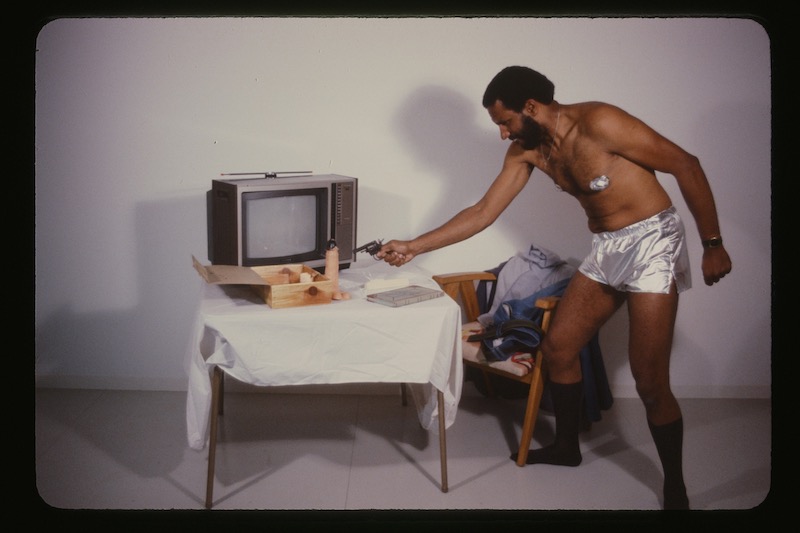
Ulysses Jenkins: ‘Just Another Rendering of the Same Old Problem,’ 1979, photograph of performance at Otis College of Art and Design, Los Angeles // Courtesy of the artist, photo by Nancy Buchanan
Through experiments with new technology (such as early forms of video calls, the so-called “videophone”) Jenkins also addressed the possibility of an expanded idea of community. One example documented and presented in the show is the Other Visions Art Band’s 1992 performance that took place in Santa Monica, but was broadcast to Documenta IX in Kassel. The band was named after Othervisions Studio, a production studio, workshop and conceptual framework for multicultural and multimedia experiments, started by Jenkins in the 70s.
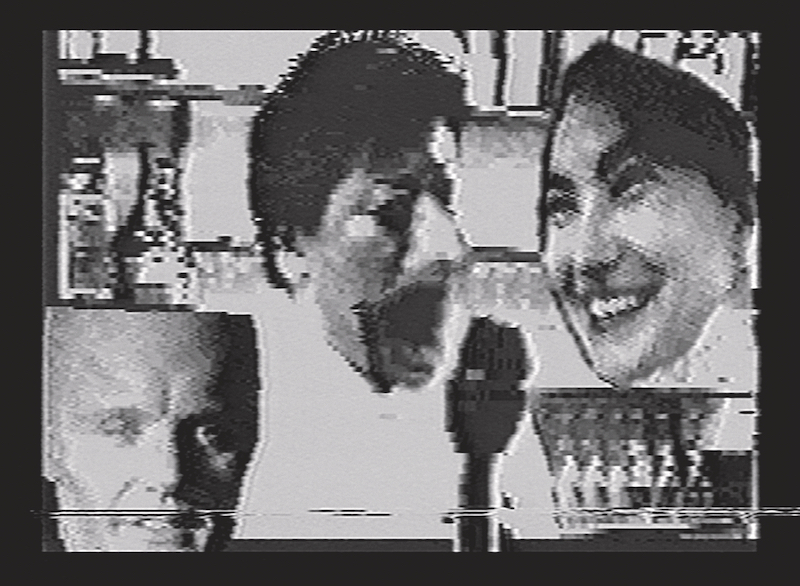
Ulysses Jenkins: ‘Documenta 9 Video Phone Performance,’ 1992, video, 11’29“, color, sound, video still // Courtesy of the artist
Jenkins’ practice aligns with key media theory findings in the 1960s and 70s, such as those popularized by Marshall McLuhan and Walter J. Ong. In the piece, ‘Televiews and cable radio’ (1981), originally conceived as a live video performance at the University of California in San Diego, media and film scholar Gene Youngblood is walking around in a Jenkins-tweaked video universe. His body disappears and reappears against a background rapidly changing between, among other things, a light beam spinning around Earth to reach a baby’s hand, a 3D-modelled satellite and a man carrying a around a parabola antenna. Youngblood’s lecture is about the need for movements that strive for social, sustainable change to take over the means of media-production. He also addresses the role of art and amateurism in a socially necessary scrutinization of media’s claim for a neutral, or “objective,” representation of reality.
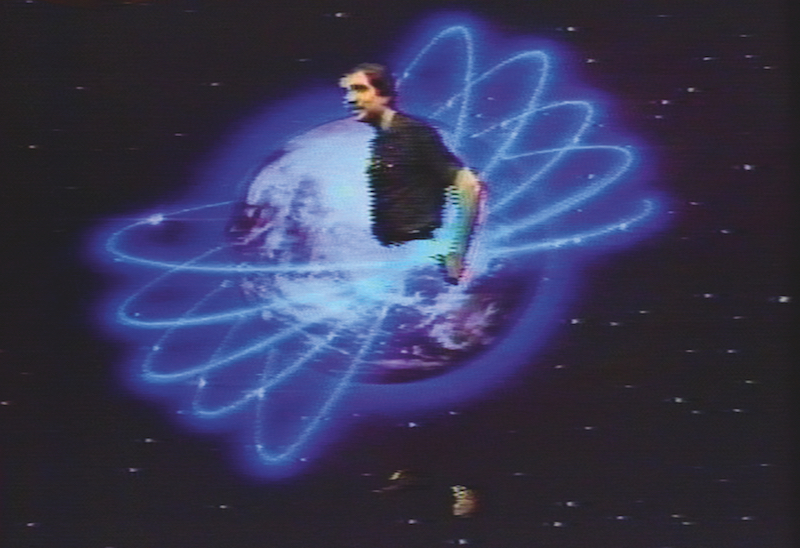
Ulysses Jenkins: ‘Televiews and Cable Radio,’ 1981, video, 11’18“, color, sound., video still // Courtesy of the artist
Apart from the media theory strand, absolutely crucial to an understanding of Jenkins is his investigation into Afro-American history and a search for new platforms for community-making on the basis of its rediscovery. This ambition is closely tied to a will to transform and critique Western ideas of meaning-making and audiovisual representation. Jenkins’ search for a new “universality” based on a critical analysis of the foundations of the concept can be compared to other contemporary American artists like Adrian Piper (born two years after Jenkins), who is known for her interest in Kantian notions of universality, and for her re-contextualizations of Black cultural expressions, like funk music.
Jenkins’ practice is amazingly hard to put into a simple box, lingering as it does in between music, performance, video and even text and drawing, from historical and theoretical considerations to more sensorial and formal experiments.
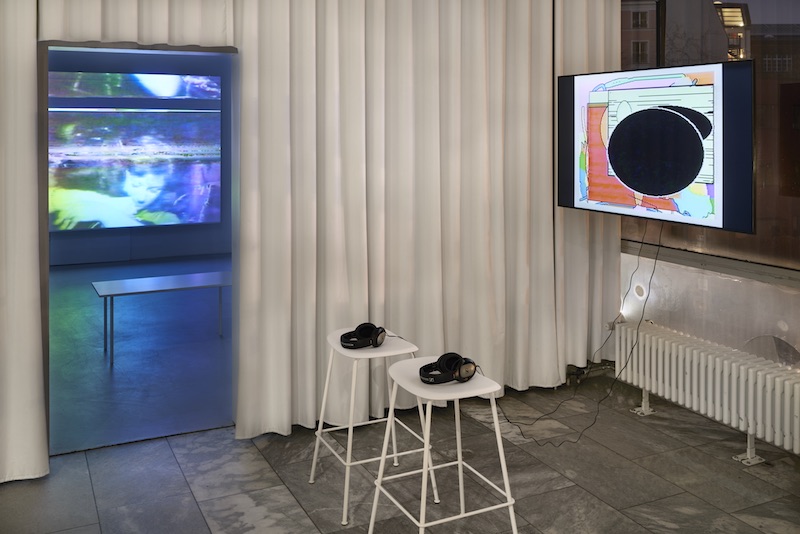
Left: Ulysses Jenkins: ‘Televiews and Cable Radio,’ 1981, video, 11’18“, color, sound. Right: Ulysses Jenkins: ‘Documenta 9 Video Phone Performance,’ 1992, video, 11’29“, color, sound, installation view, ‘ULYSSES JENKINS: WITHOUT YOUR INTERPRETATION,’ JSC Berlin // Photo by Alwin Lay
The strength of the exhibition at Julia Stoschek Foundation is that it carefully orchestrates Jenkins’ multifaceted, non-aligned practice rather than describing it. It is a retrospective that, despite its limited number of works, creates both the possibilities for a career-wide comparison, and more in-depth analysis of singular artworks. One of many curatorial gestures that did not go unnoticed was the presentation of sketches, photographs and other documents concerning the different works on display. The venue is also nicely transformed for the occasion of the exhibition, giving the space a museum-like, sober ambience: red carpets and vitrines, sometimes a graphical element related to Jenkins’ practice painted on the wall.
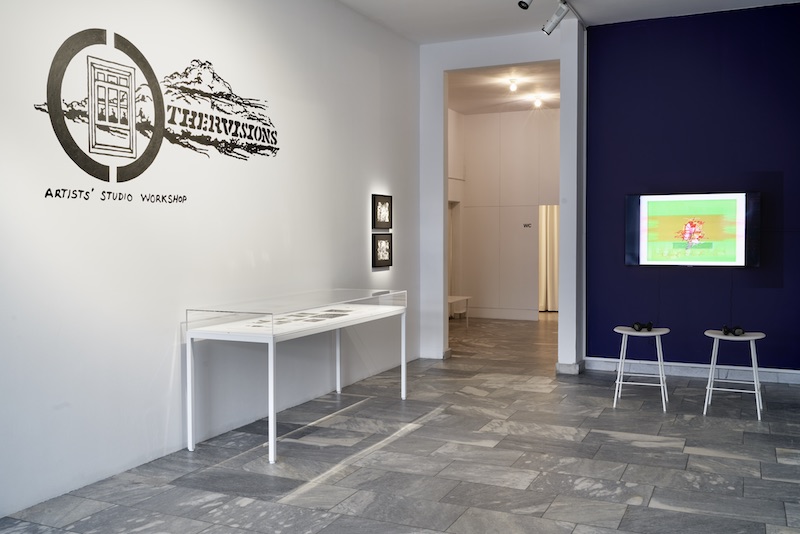
‘ULYSSES JENKINS: WITHOUT YOUR INTERPRETATION,’ installation view at JSF Berlin // Photo by Alwin Lay
In one vitrine, I find some of Jenkins’ artist statements, many of them poetic pieces of writing that give important keys to the artist’s practice. I read in one of them: “My work has envolved [sic] into a metamorphosis of rituals concerning social crisis and survival…much like reflections from the African Tribes which preserve their societies through such practices, i.e. Nubian people of East Africa.” To find an “indigenously Afro-american Universality,” the artist must rework the social technologies at hand, and avoid the conventional rationale of their use. Maybe the exhibition ‘Ulysses Jenkins: Without Your Interpretation’ is not as brave as Jenkins in its will to transform its own mediality, but it does give space for Jenkins’ practice to flourish in all its diversity.
Exhibition Info
Julia Stoschek Foundation
‘Ulysses Jenkins: Without Your Interpretation’
Exhibition: Feb. 11 – July 30, 2023
jsfoundation.art
Leipziger Straße 60, 10117 Berlin, click here for map






















